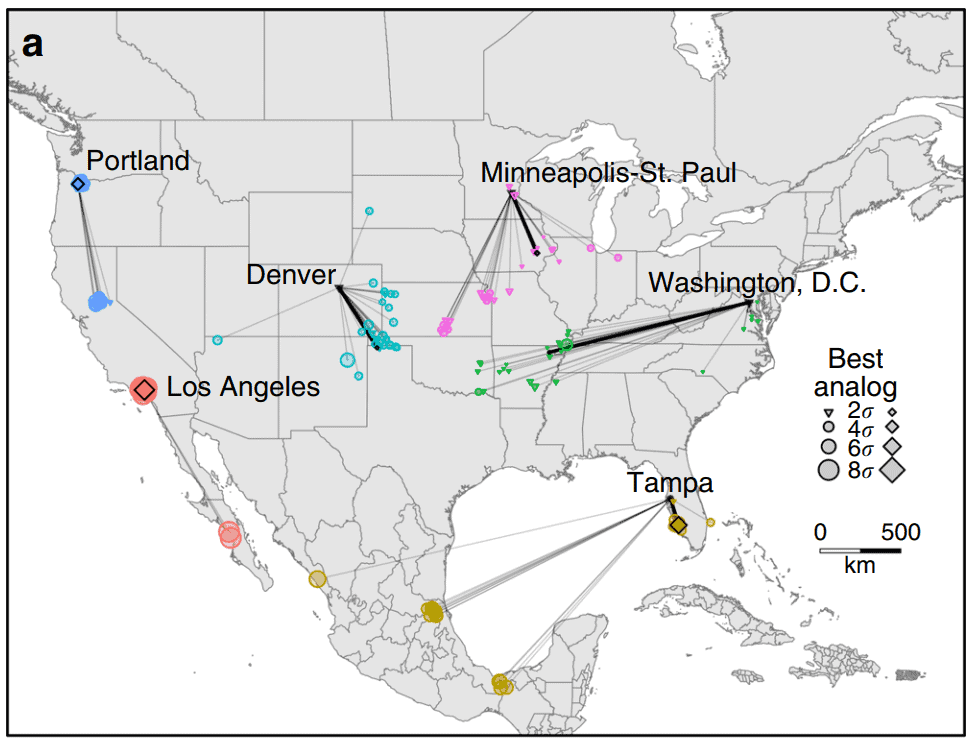Discussions about climate change can be ambiguous for the general public. Is 2°C over the mean in your area a bad thing? For a person living in northern Canada that actually sounds like good news — if you ignore the increase in both intensity and frequency of extreme weather, the extreme stress on biodiversity and food crops, and all-around global instability. In order to put things into better context, researchers have studied the climate projections of 540 North American cities for 2080 and matched them with the climates of current locations. For instance, Washington D.C.’s 2080 climate would be similar to that of Paragould, Arkansas today.
Moving south
Most humans live in urban areas, which are considered highly sensitive to climate change. With this in mind, it is important to assess what climate change could mean for urban areas, but also to communicate these expected changes in order to prepare communities. This is where climate-analog mapping comes in: a statistical technique that quantifies the similarity of an area’s climate relative to the climate of another area. Climate scientists call this forecasting by analogy, translating abstract concepts into something relatable.
Researchers led by Matthew Fitzpatrick, Associate Professor at the University of Maryland’s Centre for Environmental Science, made projections for the 2080 climate using two pathways: one where emissions would peak around 2040 before declining, the other where emissions keep rising throughout the century.
Even under the most optimistic scenario, the climate of North American urban centers will be substantially different than they are today — and in some cases, unlike climates found anywhere in the western hemisphere north of the equator.

Variation in climatic analogs by 2080 for the optimistic scenario (emissions peak in 2040). For each of the six example cities, colored triangles and circles indicate the location of the best contemporary climatic analog Colored diamonds and bold lines indicate contemporary climatic analogs for the ensemble mean.
On average, the climates of North American cities will come to resemble those 860 kilometers away, generally to the south. In some situations, some 2080 urban centers might even experience novel climates with no modern equivalent.
“Climates of most urban areas in the central and western U.S. will become most similar to contemporary climates found to the south or southeast. Put another way, by the 2080s climate of cities in the northeast will tend to feel more like the humid subtropical climates typical of parts of the Midwest or southeastern U.S. today (warmer and wetter in all seasons), whereas the climates of western cities are expected to become more like those of the desert Southwest or southern California,” the authors wrote in the journal Nature Communications.









